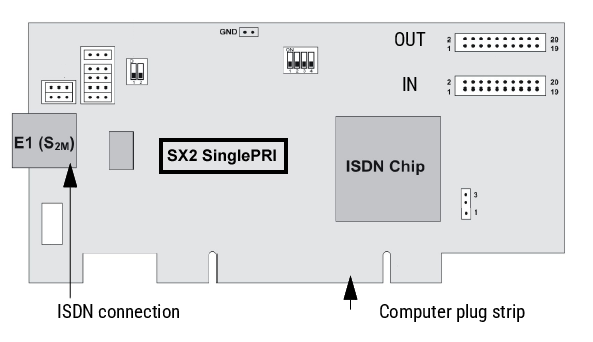D.1.3 Operation of several SX2 cards in one computer
It is possible to operate several ISDN cards in one computer. On performance grounds, we recommend operating a maximum of 76 ISDN channels from one computer. Combinations of different SX2 cards are also possible; a maximum of four logical cards, for example:
Synchronizing the SX2 cards
If there are several SX2 cards in one computer, three cases can be differentiated:
In this case all cards receive the same pulse from the public line. There is no need to synchronize the cards.
If all cards are operated in NT mode, synchronization is recommended if a call is made via two different ISDN cards.
If a call which is e.g. coming via an ISDN card from the public ISDN, is forwarded via a second card in NT mode e.g to a sub-PBX, the two cards should be synchronized. That is, the card in NT mode gets its pulse from the card that is connected to the public line.
For synchronizing two SX2 cards, you need a special cable: "Synchronisation Cable EXSG 10002".
This is how you synchronize two SX2 cards

Fig. D-1: Schematic representation of SX2 SinglePRI
If you want to operate multiple cards in NT mode and synchronize them with a card that is connected to the public line in TE mode, you can feed through the pulse from the public line with further synchronization cables. To do this, connect the "OUT" plug strip of a previously synchronized card (NT mode) to the "IN" plug strip of a further card in NT mode, and so on.